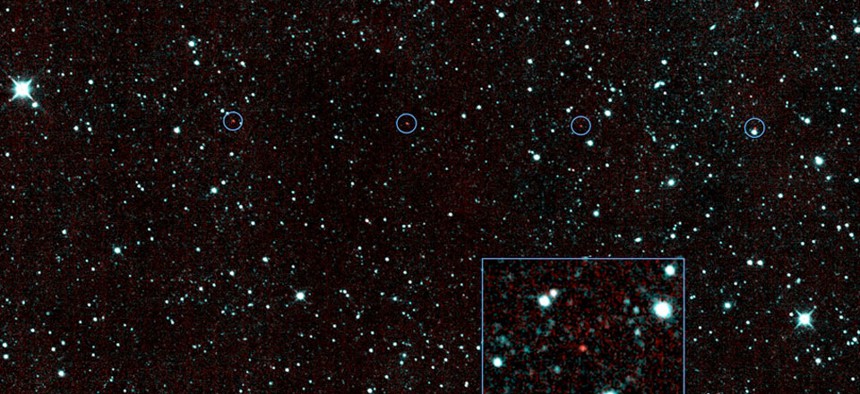NASA’s Asteroid Hunter Has Its First Target

The six red dots in this composite picture indicate the location of the first new near-Earth asteroid seen by NASA's Near-Earth Object Wide-field Infrared Survey Explorer. NASA
It marks progress in NASA's mission to locate, land on, and reroute an asteroid by 2025.
NASA's asteroid-hunting ship came out of hibernation last month, and it has already spotted its first space rock.
The asteroid—2013 YP139—lacks a catchy name, but it's a marker of progress in NASA's mission to locate, land on, and reroute an asteroid by 2025.
Its spotter, a spacecraft known as NEOWISE, emerged from two years of dormancy in December to continue searching the sky for potential targets. It found 34,000 asteroids in its first run, so the latest find should be the first of many more discoveries.
A few facts about 2013 YP139:
-
It's currently 27 million miles from Earth, but could come within 300,000 miles of our planet's orbit—nearly as close as the moon—making it a potentially hazardous asteroid.
-
Scientists estimate its diameter at .4 miles. By comparison, the meteor that streaked over Russia last year, exploding with the force of 20 atomic bombs, injuring 1,500 people, and damaging thousands of buildings, measured only about 65 feet. NASA says impact by an asteroid bigger than a half-mile in diameter would have "worldwide effects."
-
It's as dark as a piece of coal, but gives off high amounts of infrared light.
-
The asteroid—unlike the super-hot stars that provide its backdrop—is close to room temperature.
Separately, NASA also announced Tuesday that it has found the first asteroid of 2014 to reach planet Earth: a 6-to-9-foot rock that entered the atmosphere on New Year's Day before it broke up over the Atlantic Ocean.
NEXT STORY: This Is the Year of the Electric Car





